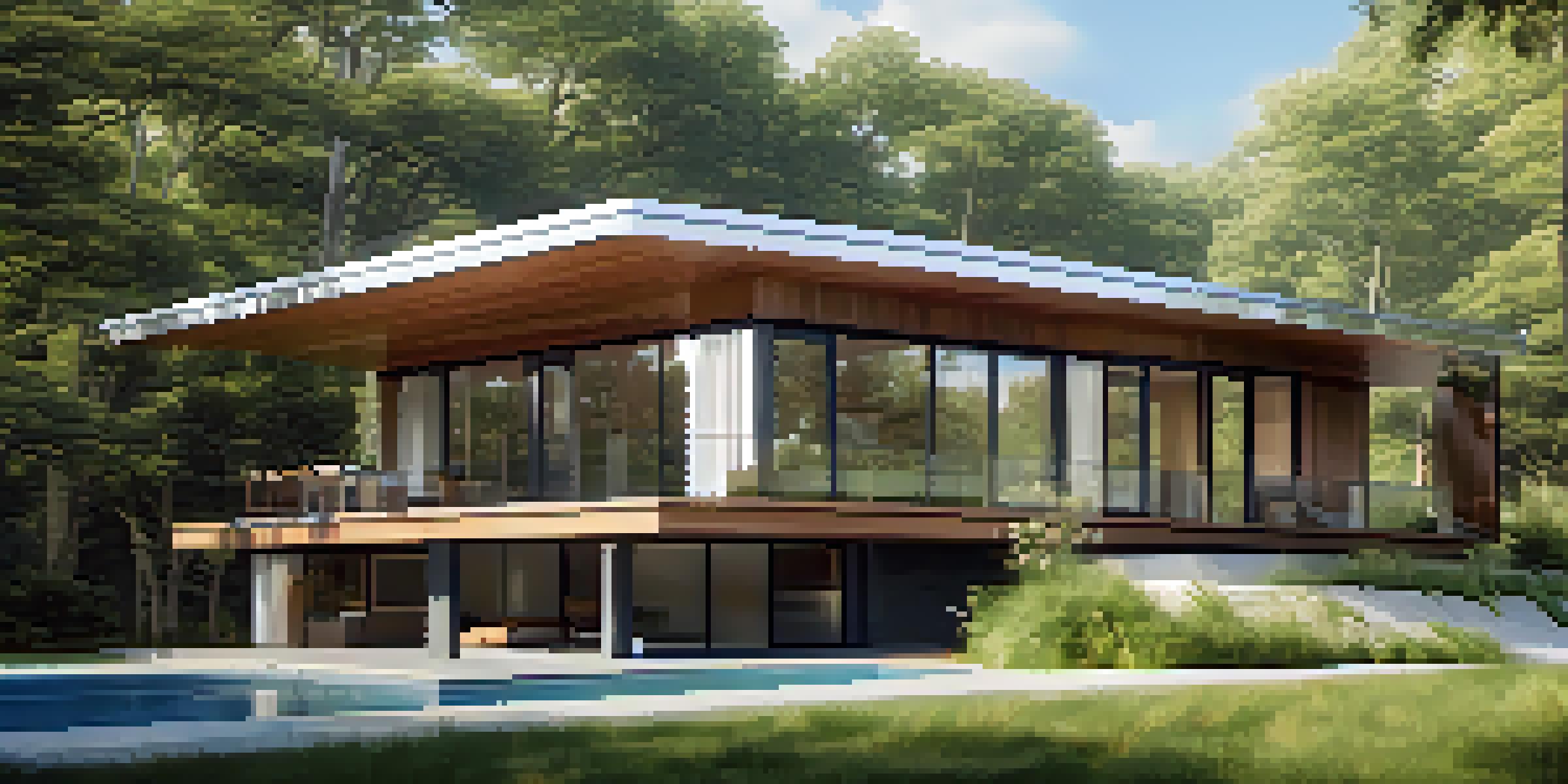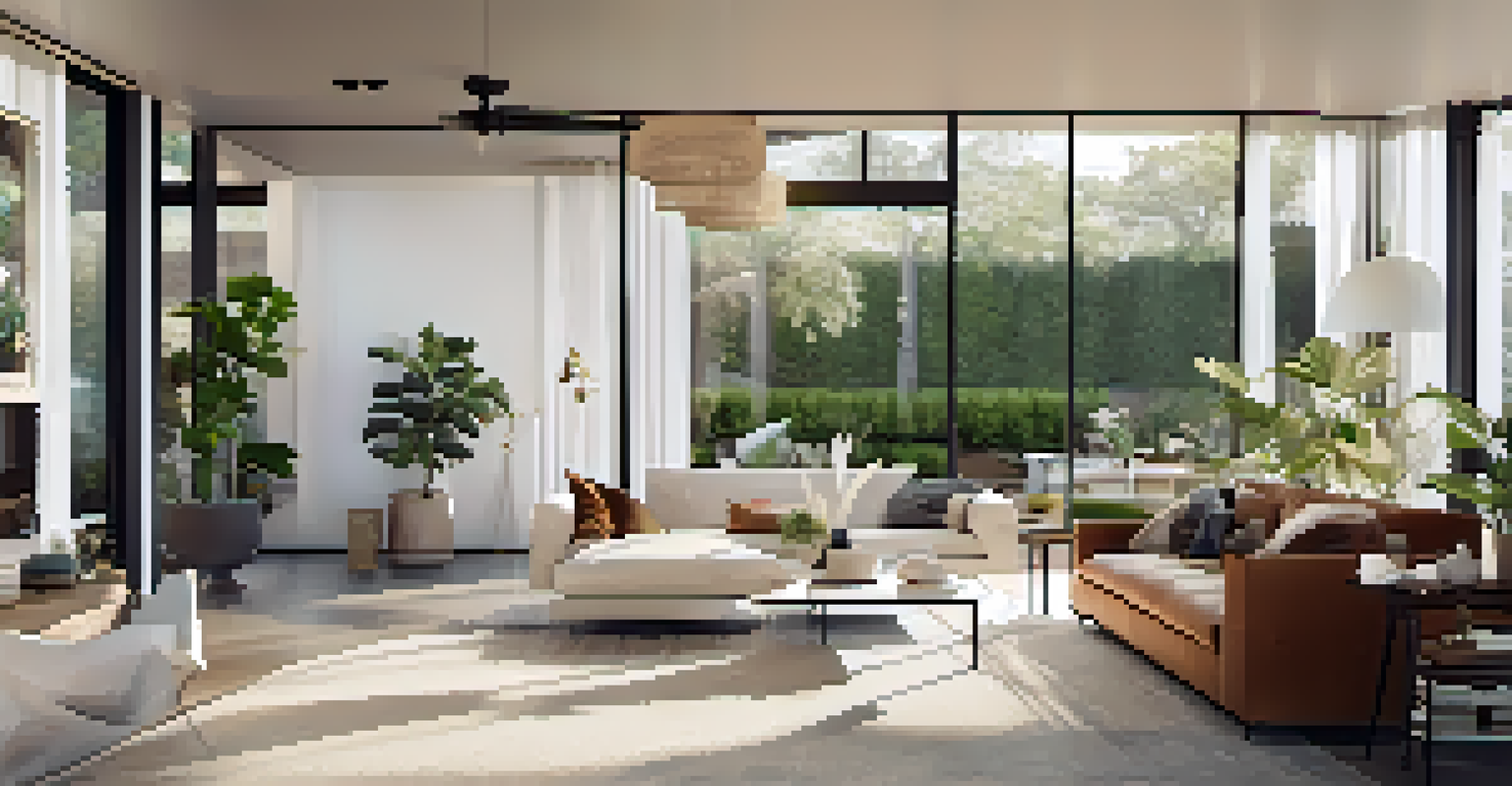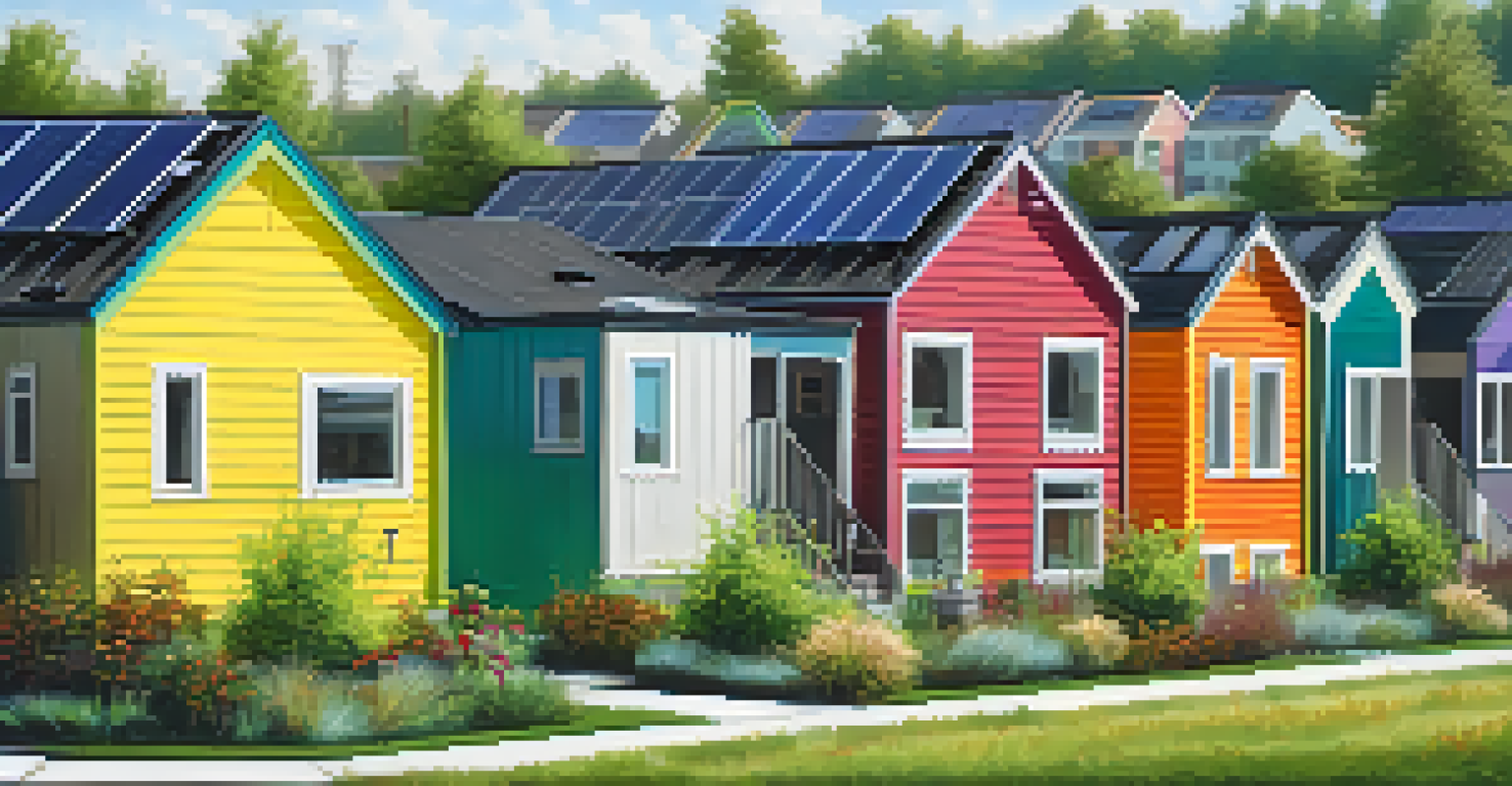The Rise of Prefabricated Homes: Market Trends and Insights

Understanding Prefabricated Homes and Their Benefits
Prefabricated homes, often called 'prefabs,' are constructed off-site and then assembled on location. This innovative approach offers numerous benefits, including reduced construction time and lower costs compared to traditional builds. Homebuyers appreciate the ability to customize designs while maintaining high-quality standards.
Sustainable living is not a trend; it is a responsibility we owe to future generations.
The convenience of prefabrication also extends to sustainability, as many manufacturers use eco-friendly materials and processes. This eco-conscious approach resonates with buyers who are increasingly concerned about their environmental footprint. As a result, prefabricated homes have become synonymous with modern, sustainable living.
In a world where time is money, the speed of construction is a game changer. Prefabs can be erected in a matter of weeks, allowing families to move into their new homes much sooner than traditional builds, which can take months or even years.
Market Trends Driving the Popularity of Prefabricated Homes
The real estate market is witnessing a significant shift toward prefabricated homes, driven by rising housing costs and demand for affordable options. More individuals and families are seeking alternatives that provide value without sacrificing quality or aesthetics. This trend is particularly relevant in urban areas, where housing prices continue to soar.

Additionally, the COVID-19 pandemic has accelerated interest in prefabs, as remote work has prompted many to seek larger living spaces. Prefabricated homes offer an attractive solution for those wishing to escape crowded city centers while still enjoying modern conveniences. This change in lifestyle preferences has bolstered the prefab market.
Benefits of Prefabricated Homes
Prefabricated homes offer quick construction, lower costs, and customizable designs, making them an attractive option for modern buyers.
Moreover, technological advancements in design and construction are making prefabricated homes more appealing. Innovations like 3D printing and modular designs allow for greater customization and efficiency, ensuring that buyers can create their ideal living spaces without the usual headaches of traditional homebuilding.
Demographics: Who is Buying Prefabricated Homes?
The demographic landscape of prefabricated home buyers is diverse, attracting millennials, families, and retirees alike. Younger buyers are particularly drawn to the affordability and sustainability aspects of prefabs, aligning with their values of cost-consciousness and environmental responsibility. These buyers often prioritize modern designs that fit their lifestyle.
The best way to predict the future is to create it.
On the other hand, families appreciate the flexibility and space that prefabricated homes can offer. With customizable designs and layouts, these homes cater to a variety of family needs, from home offices to play areas for children. It's a practical solution for growing families looking to balance comfort and budget.
Retirees also find appeal in prefabricated homes, particularly those seeking downsized living options without compromising on quality. As they look to simplify their lives, many are attracted to the ease of maintenance and energy efficiency that prefabs provide, making them a compelling choice for this demographic.
Sustainability in Prefabricated Home Construction
Sustainability is at the core of the prefabricated home movement, making it a popular choice for environmentally conscious buyers. Many manufacturers focus on using renewable resources and minimizing waste during the construction process. This commitment to sustainability not only helps the planet but also enhances the appeal of prefabs.
Energy efficiency is another key factor; many modern prefabricated homes are designed with green technologies, such as solar panels and high-efficiency insulation. This means lower energy bills and a reduced carbon footprint for homeowners. As a result, buyers can enjoy long-term savings while contributing to a healthier environment.
Sustainability Drives Popularity
The eco-friendly materials and energy-efficient features of prefabricated homes resonate with consumers increasingly focused on sustainability.
The trend towards sustainable living reflects a broader societal shift towards eco-friendliness. As more people prioritize sustainability in their purchasing decisions, the demand for prefabricated homes continues to rise, aligning perfectly with consumer values and expectations.
Challenges Facing the Prefabricated Home Market
Despite their growing popularity, prefabricated homes do face challenges in the market. One of the primary hurdles is the perception that they lack the quality and durability of traditional homes. Overcoming this stigma requires education and awareness of the advancements in materials and construction techniques.
Another challenge is zoning regulations and permitting processes, which can vary significantly by location. In some areas, strict regulations may hinder the ability to place prefabricated homes on desired plots of land. This creates a barrier for potential buyers who may be interested in pursuing this modern housing option.
Lastly, financing can be more complicated for prefabricated homes. Traditional mortgage lenders may be unfamiliar with the unique aspects of these structures, leading to potential difficulties in securing loans. As the market grows, however, more financial institutions are adapting to accommodate prefabricated homes, helping to ease this challenge.
The Role of Technology in Prefabricated Home Design
Technology plays a pivotal role in the design and construction of prefabricated homes, significantly enhancing the process. Innovations such as computer-aided design (CAD) allow for precise and customizable home plans, enabling buyers to visualize their future homes before construction begins. This transparency builds trust and excitement among potential homeowners.
Additionally, advancements in building materials, like engineered wood and composite materials, have improved the durability and energy efficiency of prefabricated homes. These materials are not only lighter and easier to transport but also offer better insulation, leading to lower energy consumption and enhanced comfort.
Challenges in the Prefab Market
Despite their advantages, prefabricated homes face challenges such as perceptions of lower quality, zoning regulations, and financing difficulties.
Moreover, smart home technology is increasingly being integrated into prefabricated designs. Features such as smart thermostats and security systems provide convenience and peace of mind, making these homes modern and tech-savvy. As technology continues to evolve, the possibilities for prefabricated homes will only expand.
The Future Outlook for Prefabricated Homes
The future of prefabricated homes looks promising, with market analysts predicting continued growth. As the demand for affordable housing rises, prefabs offer a viable solution that meets the needs of various demographics. This trend is likely to persist, shaping the landscape of the housing market for years to come.
Moreover, the ongoing innovations in construction technology and materials will further enhance the appeal of prefabricated homes. As manufacturers continue to push boundaries, buyers will benefit from increasingly sophisticated designs that prioritize sustainability and efficiency.

In summary, the rise of prefabricated homes signals a significant shift in the housing market. With their many advantages, including affordability, sustainability, and rapid construction, these homes are poised to become a staple in modern living, appealing to a broad range of buyers seeking a fresh approach to homeownership.